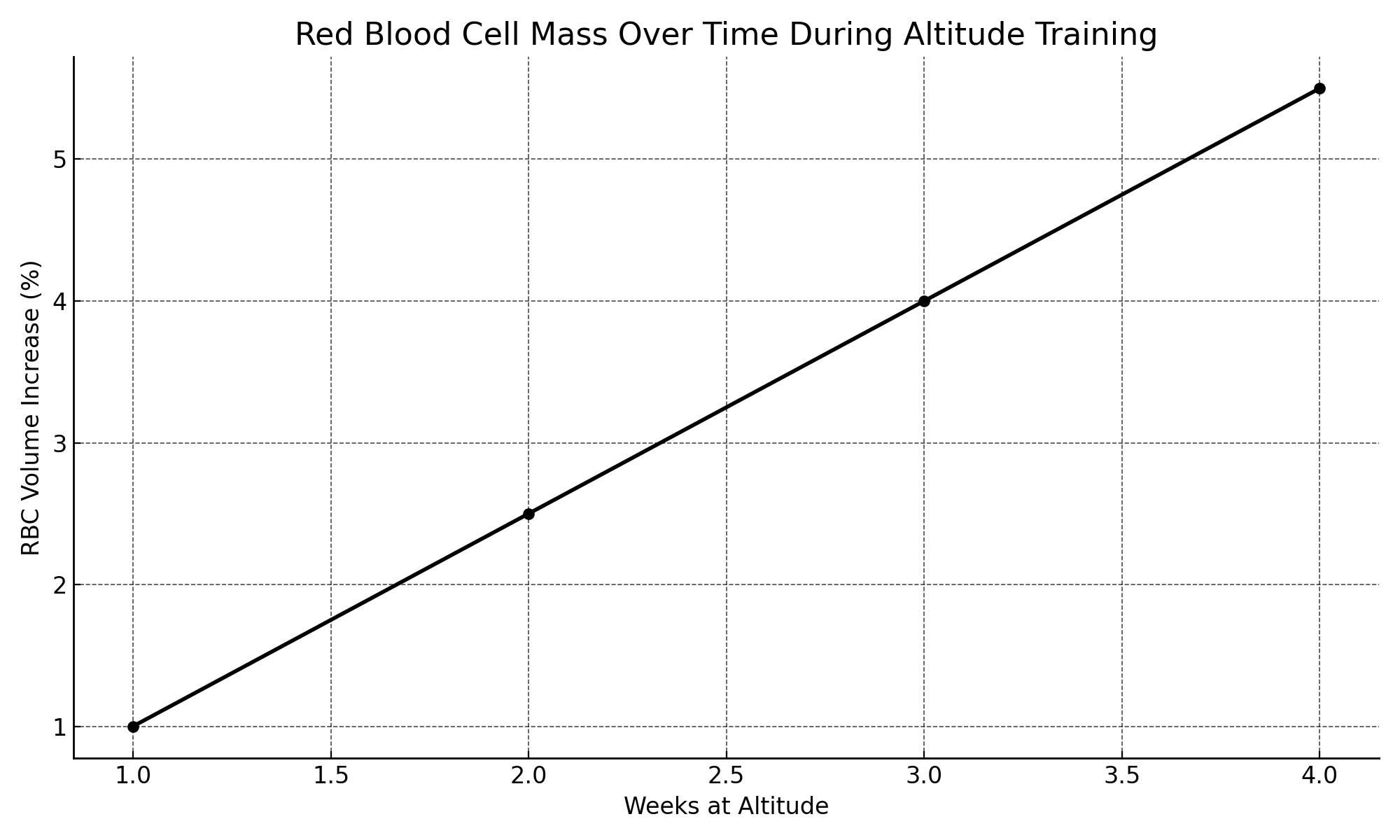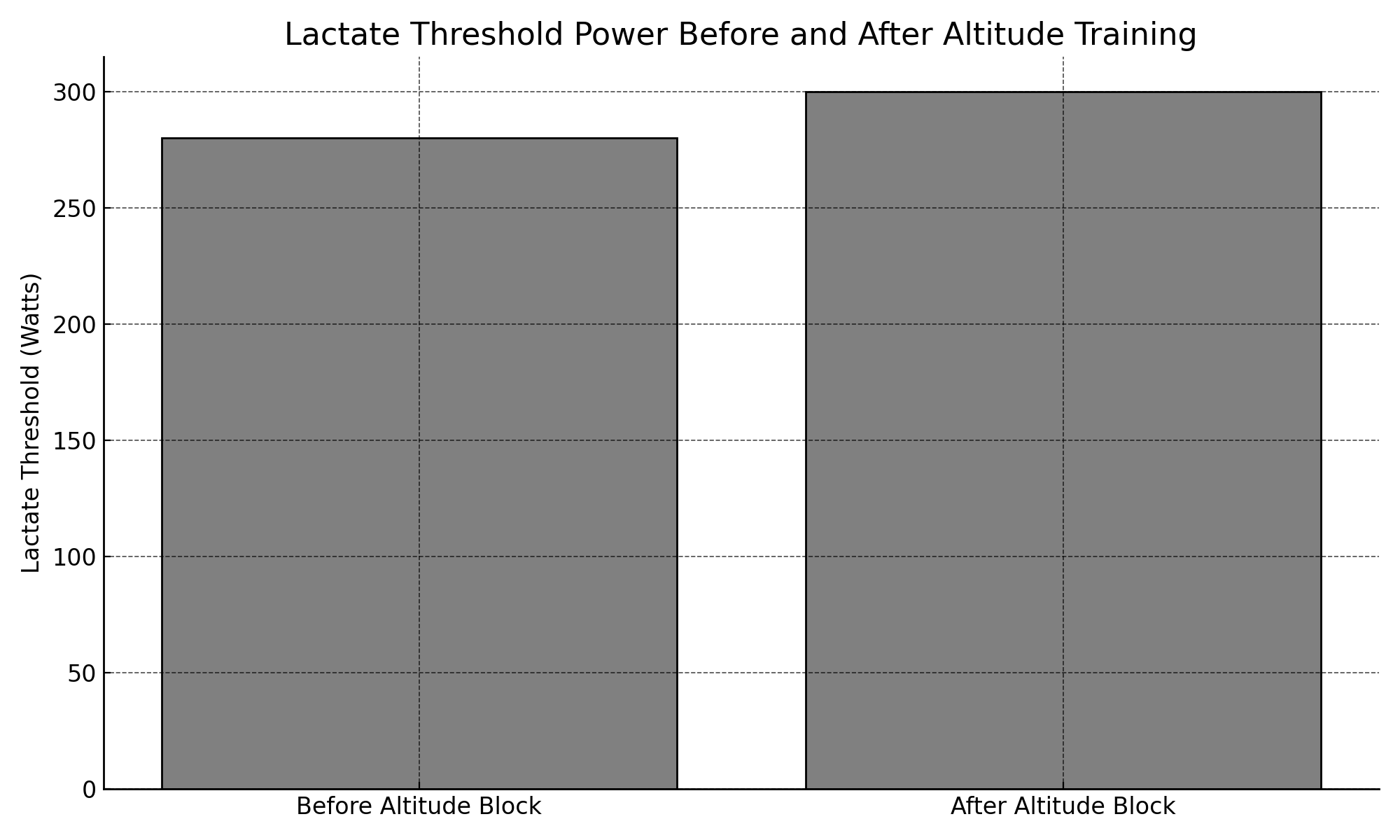The Power of Altitude Training in Cycling: Why the Pros Do It and How You Can Benefit Too
Raceline Coaching | Cycling Coaching UK
As the Giro d’Italia rolls into view, the cycling world’s attention shifts to brutal climbs, thinner air, and supreme endurance. But while most of us aren’t racing over the Stelvio Pass, there’s a lesson we can all take from the pros: altitude training works.
At Raceline Coaching, we coach UK cyclists to train smarter, not just harder. And altitude training is one of the smartest methods to boost performance—when done correctly.
In this blog, we break down:
What altitude training is and why it works
The science behind altitude adaptation
Why pro riders at the Giro use it
How amateur cyclists can benefit—even at sea level
Altitude tents and simulated altitude
When (and when not) to use it in your training year
Three performance-enhancing graphs to visualise the effect
What is Altitude Training?
Altitude training refers to exercising or living at elevations of 1,800 metres (6,000 ft) or higher, where the oxygen concentration in the air is lower. This hypoxic (low oxygen) environment places stress on the body and triggers a cascade of beneficial physiological adaptations, particularly for endurance athletes.
The result?
When you return to sea level, your body becomes more efficient at transporting and using oxygen, giving you a measurable performance edge.
Why the Giro d’Italia Riders Use Altitude Camps
Before races like the Giro d’Italia, Tour de France, and Vuelta a España, most pro teams send their riders to altitude camps in the Alps, Sierra Nevada, or Tenerife.
They do this to:
Improve aerobic capacity (VO2 max)
Increase red blood cell mass
Improve lactate threshold
Enhance fatigue resistance
It’s no coincidence that some of the best climbers and GC contenders at the Giro have spent 3–4 weeks living and training at altitude just before the race.
“You train high to build the engine, then race low to unleash it.”
The Science: Why Altitude Training Works
At altitude, every breath contains less oxygen. This hypoxia forces your body to adapt in key ways:
🔬 Key Physiological Adaptations:
↑ Erythropoietin (EPO) production – naturally stimulates more red blood cells
↑ Hemoglobin concentration – carries more oxygen to muscles
↑ Mitochondrial efficiency – more ATP per oxygen molecule
↑ Capillarisation – better oxygen delivery to muscle tissue
↓ VO2 cost at submaximal intensities – you use less oxygen for the same work
📈 Graph 1: Red Blood Cell Mass Over Time During Altitude Training
A line graph showing:
X-axis = Time (weeks)
Y-axis = Red Blood Cell Volume (% increase)
Curve shows ~1% increase per week, up to 4–6% over a 3–4 week camp.
The graph demonstrates the cumulative gain in oxygen-carrying capacity—a key metric that improves endurance performance when returning to sea level.
How Long Do You Need to Train at Altitude?
The general guideline for live high, train high or low protocols is:
Altitude StrategyDescriptionIdeal DurationLive High, Train HighStay and train above 1,800m3–4 weeksLive High, Train LowSleep at altitude, train lower3+ weeksIntermittent Hypoxic ExposureUse altitude tents or masks3–6 weeks
The gold standard is 3–4 weeks at 2,000–2,500m, followed by a taper at sea level.
Who Should Use Altitude Training?
Altitude training is ideal for:
Competitive cyclists prepping for climbing events
Riders wanting a VO2 max boost
Athletes returning from injury looking for gains without high volume
Time-crunched athletes looking for marginal gains
But it’s not for everyone. Beginners or those without structured coaching risk overreaching, losing power, or simply wasting time if they don’t adapt properly.
Simulated Altitude: Tents, Masks & Altitude Rooms
You don’t need to move to the Alps. Many UK-based cyclists now use altitude tents (aka hypoxic tents) to simulate sleeping at 2,500m while still training at sea level.
Benefits:
Replicates “live high, train low” model
Can be adjusted to individual tolerance
More flexible for work/family life
Drawbacks:
Expensive (£2,000+)
Requires consistent overnight use (8–10 hours)
May cause sleep disruption early on
At Raceline Coaching, we help athletes plan altitude exposure safely and effectively—including using hypoxic blocks in winter and Giro-style altitude tapering in spring.
📊 Graph 2: VO2 Max Improvements vs Time Spent at Altitude
Bar chart showing:
X-axis = Duration at altitude (0, 2, 4, 6 weeks)
Y-axis = % Improvement in VO2 max
Bars grow from 0% to approx. 5–7% over 6 weeks
This graph underscores the benefit of consistency. Gains aren’t immediate—but they compound with time.
Timing Altitude Work in Your Year
Altitude blocks need strategic placement in your training calendar.
PhaseAltitude FocusWhy It WorksBase Phase (Winter)Aerobic base + EPO responseMaximise volume gainsPre-Competition (Spring)VO2 boost + race prepMatch timing for Giro, etc.Peak/TaperReturn to sea level 7–10 days beforePeak when adaptations peak
The Altitude Downside: Risks and Pitfalls
Not everyone thrives at altitude. Here are the common challenges we help Raceline athletes avoid:
Loss of power – some athletes lose high-intensity ability at altitude
Sleep disruption – early altitude exposure may affect deep sleep
Dehydration – higher respiratory water loss
Altitude sickness – headaches, nausea, poor appetite
Overtraining risk – pushing too hard while adapting
🎯 Solution? Use data and guidance.
We track heart rate variability (HRV), sleep, and power data to ensure athletes are adapting—not just surviving.
How Amateurs Can Use Altitude-Like Benefits Without Going to the Alps
You don’t need to book a flight to reap some altitude training rewards. Try this:
🧠 Altitude-Inspired Training at Sea Level:
Low oxygen work: wear a mask to limit breathing in short intervals
Over-geared hill repeats: simulate muscular and aerobic stress of climbs
Hypoxic spin classes: train in CO2-controlled environments (some gyms offer this)
Altitude tents: for serious amateur racers with clear goals
At Raceline Coaching, we’ve worked with UK riders using these tools to prep for:
Étape du Tour
Giro Gran Fondo
Haute Route Alps
National Hill Climb Champs
📉 Graph 3: Lactate Threshold Before and After Altitude Block
Line graph comparing:
Pre-altitude training LT wattage: 280W
Post-altitude training LT wattage: 300W
Shows a significant improvement in sustainable power
This 7% increase could be the difference between hanging on and leading the break in a mountainous race or sportive.
Real-World Testimonial
“I did 3 weeks at an altitude camp in Tenerife, followed by a sea-level taper guided by Raceline. My FTP went up 15W, and I felt unbeatable on the climbs during the Marmotte.” — Matt, Raceline Coached Rider | Cat 2 Road Racer
Summary: Altitude Training = Smarter Gains for the Serious Cyclist
Altitude training is a powerful but complex tool. Done right, it can improve:
VO2 max
Red blood cell count
Fatigue resistance
Lactate clearance
Race-day performance
But it needs smart planning, proper recovery, and expert coaching.
At Raceline Coaching, we help you build altitude strategy into your season—whether that means a full camp abroad, a UK-based hypoxic setup, or simulating the physiological stress of altitude through smart training blocks.
Ready to Train Like a Pro?
Whether you’re targeting a mountain sportive, national-level racing, or just want to build an unbeatable engine—altitude training might be your missing piece.
👉 Limited coaching slots available now for athletes prepping for the summer racing season.
👉 We offer custom coaching, altitude training advice, and full performance analysis.
📞 Book your free consultation today at www.racelinecoaching.co.uk
Or email us: info@racelinecoaching.co.uk







